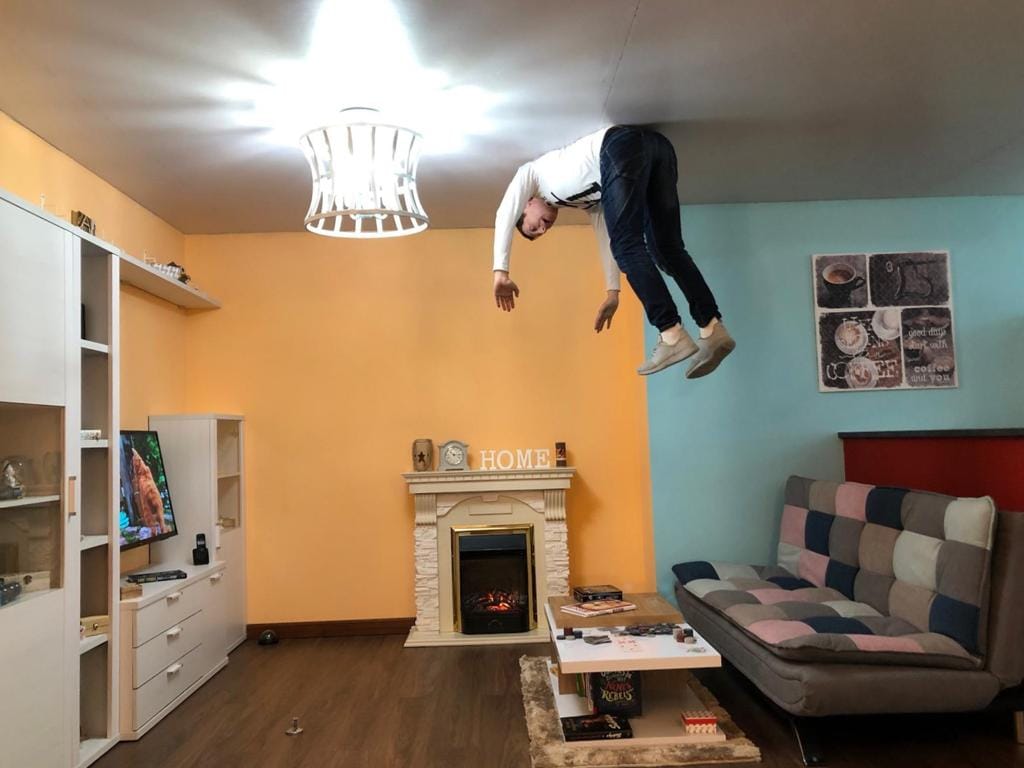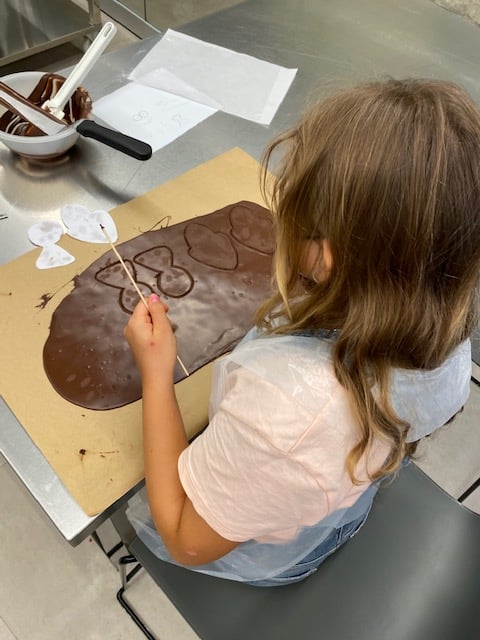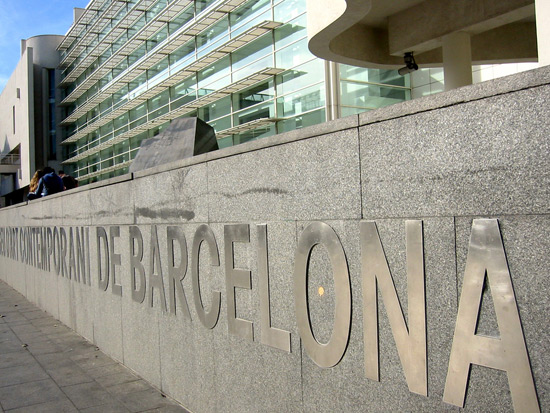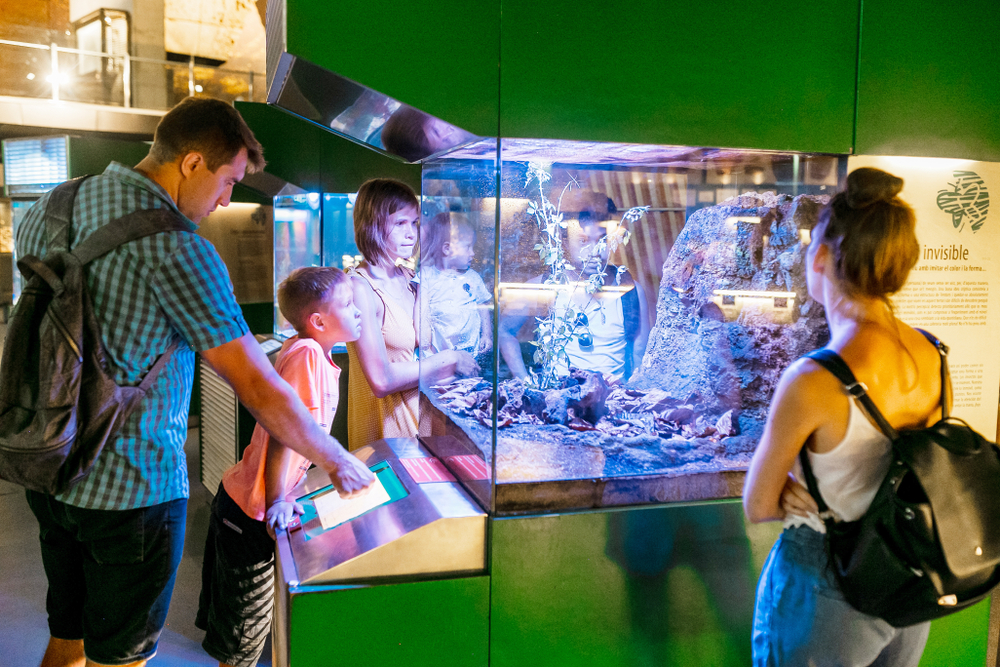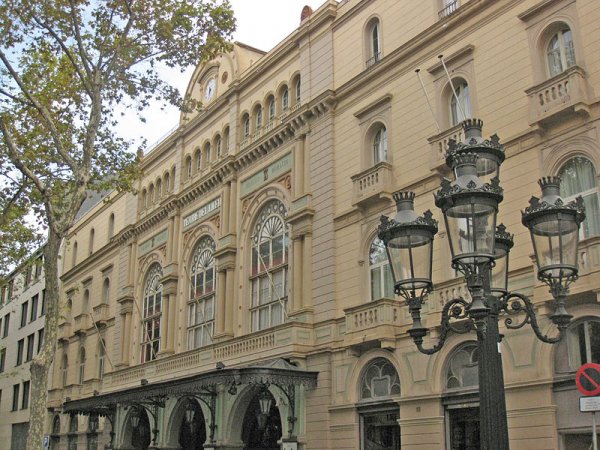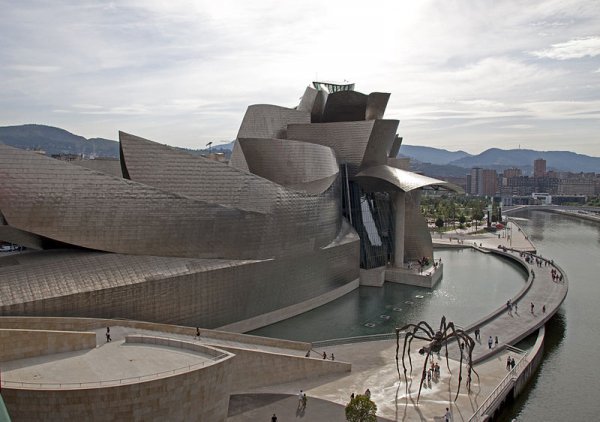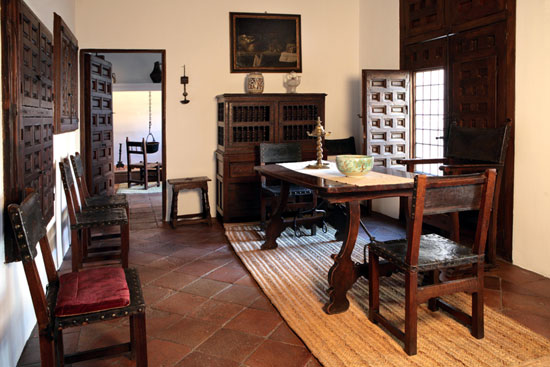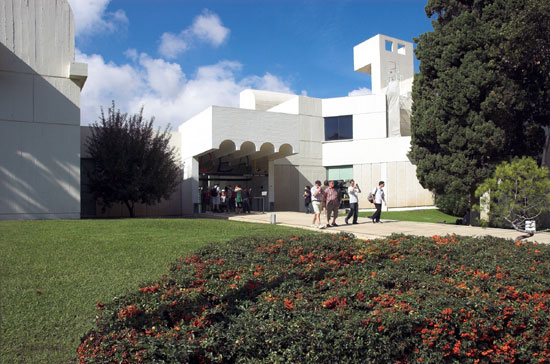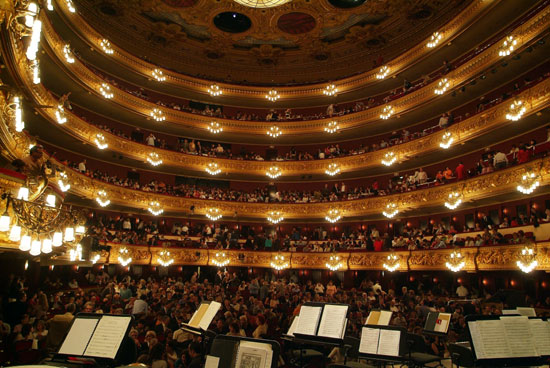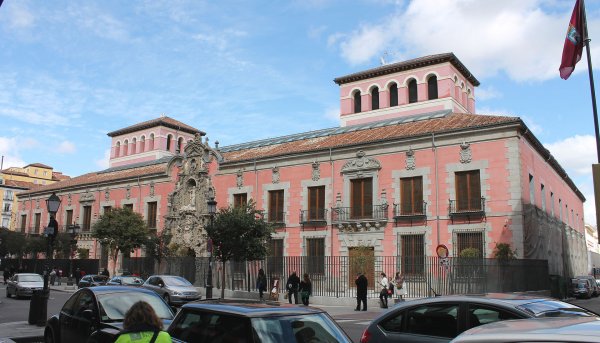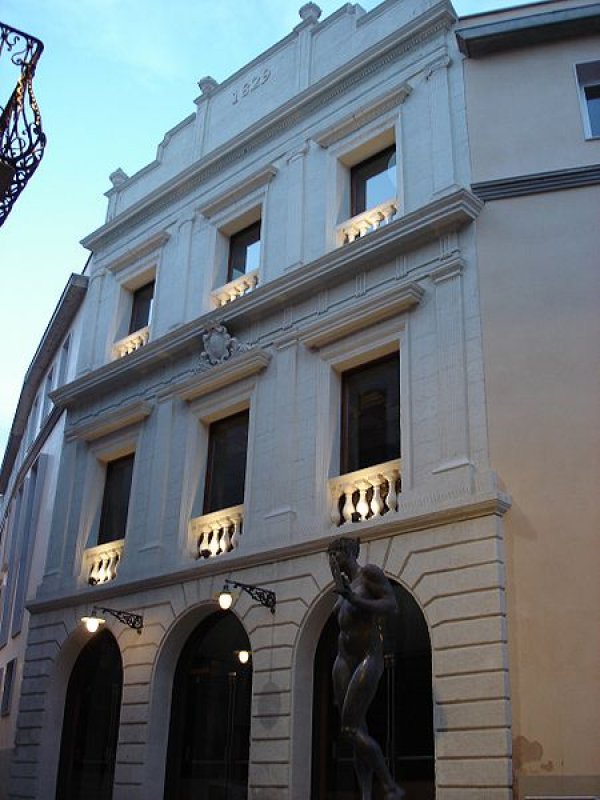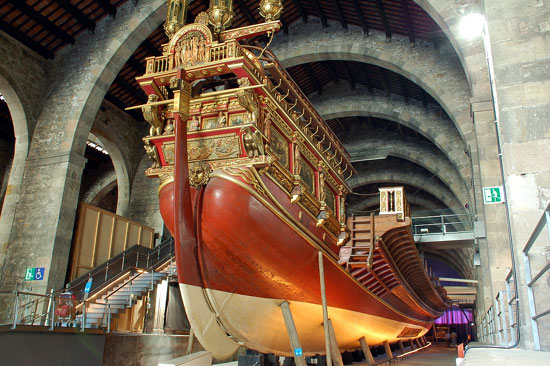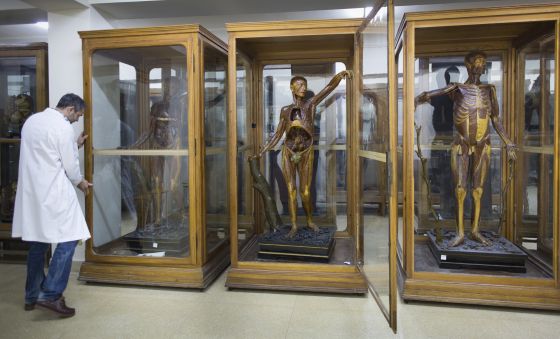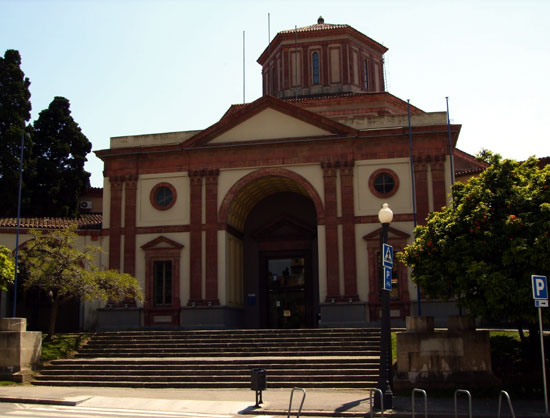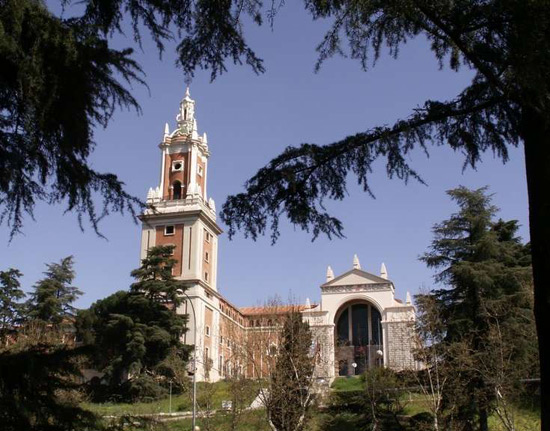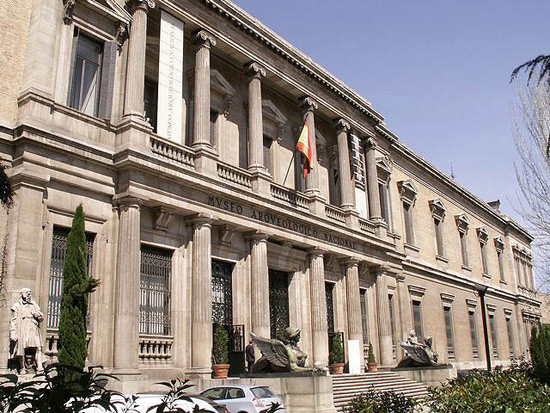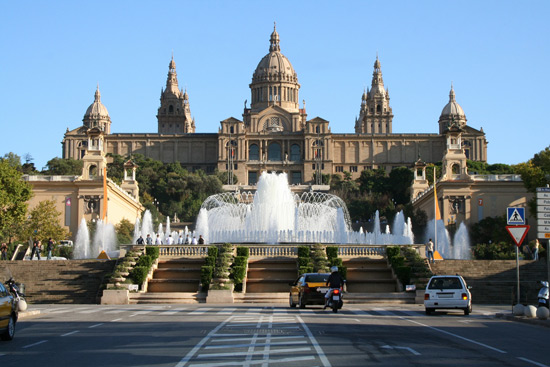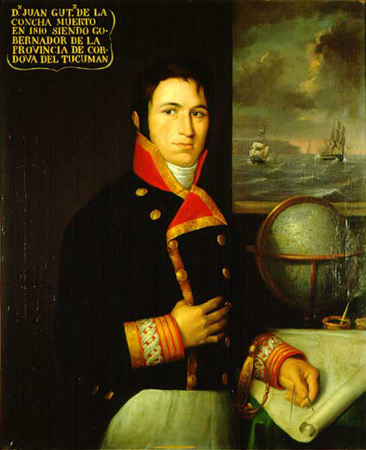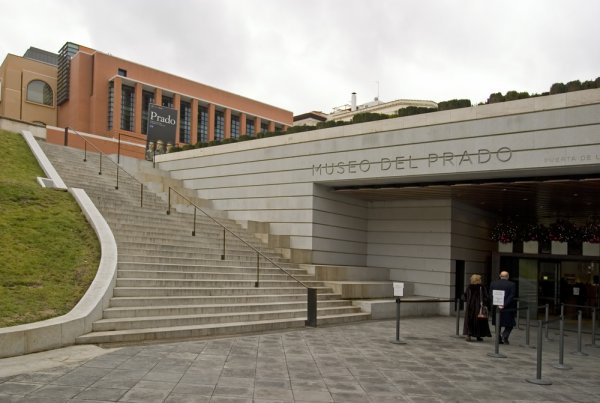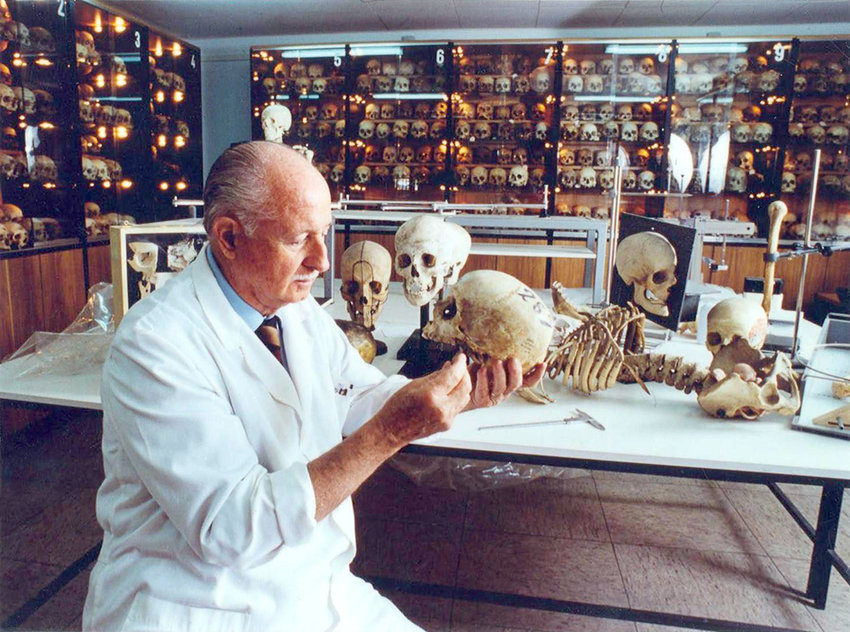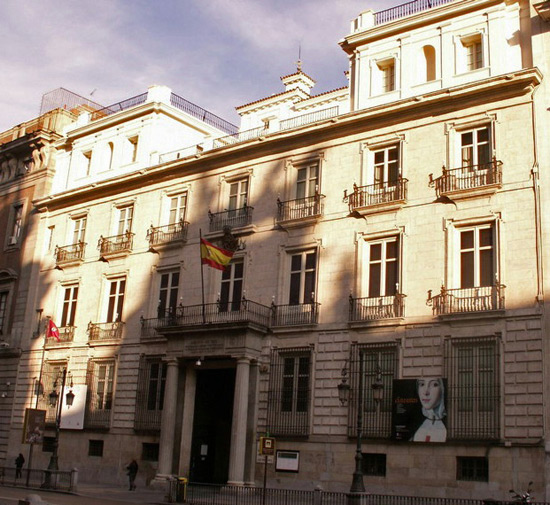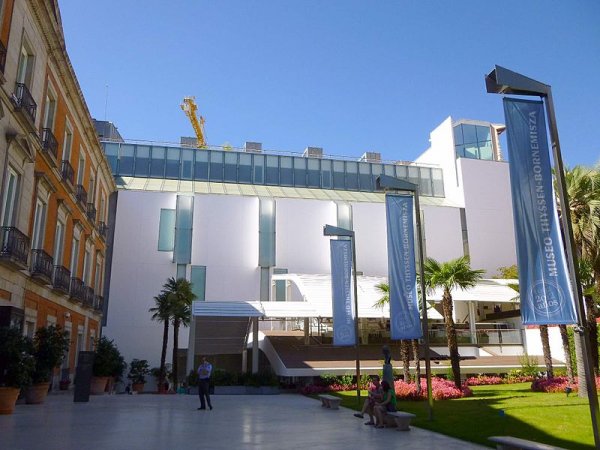Points of Interest
Barcelona Football Club Museum
Museu del FC Barcelona Avinguda Aristides Maillol
Barcelona 08028, Spain
For nine months of the year, it can feel like this city lives through its soccer team. Barcelona FC is one of the most famous, well supported, and successful clubs in the world, and has lifted the European Cup on three occasions. Among the club's stars are three wizards of the footballing world: Lionel Messi, Neymar, and Andrés Iniesta. Visitors and fans can learn about the history of the club at the museum, part of the monumental Camp Nou, a sports stadium which holds more than 100,000 people. Take a tour of the stadium and you'll see the changing rooms, the dugouts, the players' tunnel, the president's box, and the pitch itself.
Big Fun Museum
La Rambla, 88
Barcelona, Spain
Kids of all ages will want to visit this Barcelona museum, with surreal experiences and amazing photo ops. Inside Big Fun Museum are 3D facilities, mazes, and illusions that offer an unforgettable time. Themed areas include Believe It or Not, the Giant’s House, Topsy-Turvey House, Sweet Museum, Museum of Madness, Food Art, and Alice Through the Looking Glass. Learn incredible facts, walk on the ceiling, swing between cotton candy clouds, and see a collection of art made from food. The Museum of Illusions uses 3D props and fun and engaging paintings to create imaginative scenes where you’ll want to pose for photos. Ever stood “inside” a dinosaur’s mouth? You can here! There also is the Time Out Zone-Dry Pool, offering let-loose playtime amid a pit of colorful balls.
CaixaForum Madrid
Paseo del Prado 36
Madrid, Spain
This iconoclastic gallery stands among the venerable buildings of Paseo del Prado. Built on the site of an old power station, the structure was adapted by Swiss architects Herzog and de Meuron (who performed similar sleight of hand with London's Tate Modern). Opening in 2008, CaixaForum was an instant hit with Madrileños thirsty for contemporary architecture. The Swiss team kept the brick shell of the power station, but removed the heavy stone base which seemed to anchor it to the ground. Instead, they built additional levels clad in rusted steel. Completed, the ensemble looks something like a cross between a Moorish fortress and an abstract painting by Mark Rothko. On the wall beside the gallery, Herzog and de Meuron designed a four-story hanging garden, an expanse of green in counterpoint to the monolithic red of the metal. Catalan building society La Caixa sponsors the exhibitions inside, but the building alone is worth seeing.
Chocolate Museum
Museu de la Xocolata Carrer del Comerç, 36
Barcelona, Spain
The chocolate museum Museu de la Xocolata shows the history of chocolate in Europe: its origins, how it got to us, and how it was traded as an element between myth and reality as well as medicine and food. Visitors learn how chocolate was brought from South America to Europe by the Spanish conquerors, about the cocoa drink of the Aztec called Xocoatl, and the importance of chocolate for ancient cultures of Latin America such as the Aztec and Maya. The tour continues with the history of chocolate in Europe and its influence on art and baking. The museum displays several works of art made of chocolate. A piece of melty goodness is offered to every visitor prior to the tour, and more can be purchased to take home.
Contemporary Art Museum
Plaça dels Angels
Barcelona, Spain
The Museum of Contemporary Art breathed light into the darkened underworld district of El Raval, once known for its prostitutes and junkies. Opened in 1995, this gleaming geometric structure by American architect Richard Meier immediately became a beacon for the area. Its construction not only represented a boost to El Raval, but a fillip for Spanish art as a whole. Look for the puzzle area, just one way in which the museum is integrated with its community. Jigsaw photographs of life in the surrounding area, or from apartments in nearby tenements, show life in El Raval. The collection includes work by international and Catalan artists, including Robert Rauschenberg, Jeff Wall, Antoni Tàpies, Joseph Beuys, Antonio Saura, Eduardo Chillida, and Jean-Michel Basquiat.
CosmoCaixa Barcelona
Carrer d'Isaac Newton, 26
Barcelona, Spain
CosmoCaixa Barcelona is a science museum where all ages can spend an interesting day. Universe Room offers an interactive journey of the cosmos and its evolution, from the Big Bang to present day. The Geological Wall is made up of seven large, real pieces originated by different geological processes, which have contributed to shaping the structure of Earth. The Flooded Forest immerses visitors in an ecosystem where 50 percent of the planet's biodiversity lives. In this 1,000-square-meter (10,763-square-foot) fragment of rainforest, they will discover some of the most representative species of the Amazon such as alligators, ants, boas, fish, tropical birds, and plants. Among other exhibits are Two Glances at Antarctica and Sustainable Building.
—Information provided by CosmoCaixa
Erotic Museum of Barcelona
Museo Erótico de Barcelona 96 La Rambla
Barcelona 08002, Spain
A small museum focused on the history of sex, Erotic Museum of Barcelona offers a fascinating look at sexual intercourse from ancient times to the present. Exhibits include the Kama Sutra, Japanese depictions of oversized genitalia known as shunga, some of the first pornography, paintings by Picasso, photographs, sexual devices, and world records.
Grand Theater of Liceu
Gran Teatre del Liceu 51-59 La Rambla
Barcelona, Catalonia 08002, Spain
Opened in 1847, the Liceu is Barcelona's main opera house and is a symbol of art and culture. The building was damaged during a period of social unrest in the late 19th century, but the theater re-opened after a year. The opera house prospered in the early 20th century, although the Spanish Civil War caused the suspension of opera performances for a few years. The building was again destroyed by fire in 1994 and rebuilt around the undamaged parts. The new and improved structure, equipped with state-of-the-art acoustics and stage technology, opened its doors in 1999.
Guggenheim Museum Bilbao
Museo Guggenheim Bilbao Abandoibarra Et. 2
Bilbao 48009, Spain
This contemporary art museum, designed by Canadian architect Frank Gehry for the Solomon R. Guggenheim Foundation, opened in 1997. The building is a classic example of the deconstructivist architectural style, which seems to dismantle basic structural elements into smaller pieces. Random curves, designed to catch the light, dominate the design. Modeled to resemble a fish, the building holds reflective panels that give the appearance of fish scales and make for a magnificent view from the river. The permanent exhibits in the museum focus on 20th-century art, and the high point is the Fish Room, a gallery that exhibits iron sculptures by Richard Serra.
House of Lope de Vega Museum
Casa Museo de Lope de Vega Calle de Cervantes 11
Madrid, Spain
It would have hurt Lope de Vega to learn that his street would be named after his greatest rival, Cervantes. But this prolific Spanish writer was never one to let anything annoy him for long. He was too busy writing, churning out an incredible three novels, four novellas, nine epic poems, 3,000 sonnets, and 1,800 plays during his 72 years. No wonder his contemporaries referred to this former child prodigy as monstruo de la naturaleza ("freak of nature"). His house offers a fascinating glimpse of life in Spain's golden age, featuring a number of household items from the 16th and 17th centuries, such as whale oil lamps and a metal warming pan used for heating beds. In the garden, look out for the very fruit trees Lope wrote about in his journals. Closed Sunday, Monday, and the whole of August.
Joan Miró Foundation
Fundacio Joan Miró Parc de Montjuïc
Barcelona, Spain
This light-filled museum holds the world's largest collection of Joan Miró's work. It contains 240 paintings, 150 sculptures, and several thousand drawings from the Barcelona-born artist's. Although only part of this substantial collection is exhibited, it's possible for visitors to trace Miró's progression from realistic early sketches, through lithographs from the devastating Spanish Civil War, to the later style which would be his trademark, primary colors and simple symbols. There are a few rooms featuring the works of other artists (including Fernand Leger, Henry Moore, Max Ernst, Marcel Duchamp, and American sculptor Alexander Calder), some of whom were influenced by Miró. Don't miss the roof, which features sculptures and terrific views of Barcelona. The white-walled museum was designed by Josep Lluís Sert, a Catalan architect, friend of Miró, and one-time Harvard dean of architecture.
Liceu Grand Theater
Gran Teatre del Liceu 51-59 Les Rambles
Barcelona 08002, Spain
Opened in 1847, the Liceu is Spain's main opera house and, besides remaining a fine symbol of the city's art and culture, also holds the distinction of having one of the world's largest opera stages. The building was damaged during a period of social unrest in the late 19th century, but the theater reopened after a year. The opera house prospered in the early 20th century, although the Spanish Civil War caused the suspension of opera performances for a few years. The building was again destroyed by fire in 1994 and rebuilt around the undamaged parts. The new and improved structure, equipped with state-of-the-art acoustics and stage technology, opened its doors in 1999.
Madrid History Museum
Museo de Historia de Madrid Fuencarral 78
Madrid, Spain
The scale model of Madrid created by León Gil de Palacio in 1830 is one of the more memorable pieces in this museum. More than five meters long, it offers an intriguing look at an older Madrid, with no Gran Via to orient visitors. Learn about the development of the Spanish capital and the artisans who made Madrid so wealthy, from metalworkers to sculptors, painters to the porcelain makers of the Buen Retiro royal factory. Maps, photographs, postcards, medals, and prints add color to the social story. The building that now houses the museum dates back to the 18th century, when it was an orphanage. Much of the former structure was demolished, but Pedro de Ribera's amazingly ornate entranceway remains a terrific example of Castilian baroque ornamentation.
Maó Theater
Teatre Principal de Maó Carrer d'en Deià, 40 Maó-Mahón
Menorca 07702, Spain
Known more popularly in local circles as The Principal, the Teatre Principal de Maó is one of the oldest opera settings in Spain. It was built in 1829 along the lines of 18th-century Italian opera houses. The Principal is the venue for the annual Opera Week, an event where masters of Bel Canto, a style that originated in Italy in the 16th century, perform.
Maritime Museum
Museu Maritim s/n Avinguda de les Drassanes
Barcelona 08001, Spain
Though Barcelona's gilded city districts draw millions of tourists every year, the sea was once its true crown. In the 13th and 14th centuries, the city was a genuine power in the Mediterranean. The Drassanes Reials (Royal Shipyards) are a showcase for this maritime might. Among the collection are navigation charts, nautical figureheads, and displays telling the story of a 19th-century submarine, the Ictineo. In pride of place is the Galera Real, an exact replica of the galley in which Don Juan of Austria defeated the Ottomans at the Battle of Lepanto in 1571. You can see images of the slaves who once rowed the galley projected on the ship's walls. The collection is diverting, but it is the building itself that is most impressive, a cathedral-like structure with a roof held high by Gothic arches.
Museum of Anatomy
Javier Puerta Plaza de Ramón y Cajal
Madrid, Spain
Part of Complutense University’s College of Medicine, the Museum of Anatomy was created in 1787 by royal decree of King Charles III. It features wax sculptures of anatomically precise models representing the stages of pregnancy from conception to childbirth, the oldest of which dates to 1794. There also is a collection of plaster sculptures of various human body parts, and a bone collection includes thousands of skulls as well as two skeletons.
Museum of Catalan History
3 Plaça de Pau Vila
Barcelona 08003, Spain
Barcelona's sense of consciousness, its civic uniqueness, is so strong and so famous worldwide that it is easy for international tourists to forget how Franco tried to wipe Catalan national identity off the map of Spain. Inside the substantial 19th-century warehouse of Palau de Mar, visitors can discover this region's history, from the early Moorish settlements (try turning an Arab waterwheel!), through the city's medieval splendor, to the tumult of the 20th century. Among the Catalan artifacts from the years surrounding the Spanish Civil War are armaments, air raid shelters, and a first edition of George Orwell's Homage To Catalonia. Founded 21 years after Franco's death in 1975, this museum ensures that the region's political, economic, and cultural history will be remembered.
Museum of the Americas
Avenida de los Reyes Católicos 6
Madrid, Spain
Along with annexing new territory in South America, Hernán Cortés and his conquistadores brought back galley loads of old treasure. This museum features statues, costumes, jewelry, and items from everyday life. One example is the Tudela Codex, the Aztec book of law, a priceless pictographic illustration of the civilization's way of life. Other pieces came as gifts South American governments to Spain. Look out for the golden Quimbaya figures from Colombia, as well as Inca stone statues, Mayan manuscripts, and black Aztec masks carved from obsidian. Beware the shrunken heads, and also the unusually early closing time: The museum is open every day except Monday, but it shuts its doors at 3 p.m.
National Museum of Archaeology
Calle de Serrano 13
Madrid, Spain
Bison and boars populate the cave paintings found at Altamira, and a replica of this prehistoric exhibit is one of the museum's highlights. Isabella II founded the museum in 1867 as an artistic home for royal treasures. Covering thousands of years of human history, the collection includes pieces from Carthaginian, Visigoth, Roman, Egyptian, Muslim, Iberian, Celtic, and Greek cultures. Most of the excavated material comes from Spain, offering an amazing reminder of the continuous human presence on the Iberian Peninsula. The museum features La Dama de Eche, the marble bust of a fifth-century Iberian woman with ornate headgear that presages later Spanish female fashions such as the mantilla. Admission is free on Sundays and Saturday from 2:30pm to 8:30pm
National Museum of Catalonian Art
Museu Nacional d'Art de Catalunya s/n Parc de Montjuïc
Barcelona 08038, Spain
The strength of this museum is the sheer breadth of its collection. Strictly speaking, it combines multiple collections spanning 1,000 years of art, including the Thyssen-Bornemisza holding, modernist works from the Museum of Modern Art, as well as the collection of Catalan politician Francesc Cambó, an enviable accumulation featuring works by Goya and Zurbaran, as well as by Titian, El Greco, and Rubens. Significant pieces elsewhere in the museum include the Crist de Taüll, a terrific example of Romanesque frescoes. Taken from the 12th-century church Sant Climent de Taüll, it shows how French influences were combined with Byzantine styles, and even includes the scrawled graffiti of medieval monks. The museum has a decorative arts section, featuring furniture from Gaudi's Casa Batlló, as well as a section dedicated to Catalan art from the 19th and 20th centuries.
Naval Museum
Museo Naval Paseo del Prado 5
Madrid, Spain
An ox hide map covered with ink and watercolor constitutes one of the highlights of Madrid's Naval Museum. The Mappa Mundi, created by Juan de la Cosa in 1500 for Ferdinand and Isabella, is astonishingly accurate in terms of its European geography. De la Cosa was a shipmate of Columbus' on three voyages to the Americas. Although it gets a little fanciful around the US, this map is supposedly the first of the North American continent. The museum's collection spans more than 500 years of Spanish seafaring history and features stunning maritime models, weaponry, flags, uniforms, and charts. There are also a few oddities, including a Gilbert Islander's sword ridged with shark teeth, a torpedo-loaded submarine designed in 1884, and a Nazi swastika retrieved from the Deutschland, a German battleship bombed off the coast of Ibiza in 1937.
Palace of Catalan Music
C/ Palau de la Música, 4–6
Barcelona 08003, Spain
This concert hall was built in 1908 for the Orfeó Català, a choral society. Featuring a Catalan Modernisme design, the distinctive features of the brick-and-iron structure include curves, dynamic shapes, and a rich decoration of floral and other organic motifs. This structure is the only one of its kind in Europe that is illuminated entirely by natural light during the day. The concert hall, with a seating capacity of 2,200, has walls of stained glass and an inverted dome in gold and blue that gives an illusion of the sun and the sky. The Lluís Millet hall on the second floor is a gathering place for concert-goers and also used as a teaching area for tourists.
Picasso Museum
Museu Picasso 15-23 Carrer Montcada
Barcelona 08003, Spain
The museum, housed in five adjoining medieval palaces, hosts one of the most extensive collections of artworks by the 20th-century Spanish artist Pablo Picasso. The permanent exhibits include nearly 3,500 of his works, mostly from his formative years. The museum also houses two of his major works, The First Communion and Science and Charity . The museum also holds special exhibitions presenting artworks by Picasso and other artists, and provides a venue for seminars and lectures on Picasso and other art events.
Prado Museum
Museo Nacional del Prado s/n Paseo del Prado Madrid
Madrid 28014, Spain
The Prado is a museum and art gallery that houses one of the world's finest collections of European art typical of the period between the 14th and 19th centuries. Besides exhibiting paintings and sculptures, it also houses an important collection of drawings, prints, coins, medals, decorative objects, and the entire collection of Dauphin's Treasure. The museum exhibits works of masters like Spain's Diego Velázquez, Francisco Goya, and El Greco, as well as Dutch painter Hieronymus Bosch, a favorite of King Philip II of Spain. There also are tours just for kids as well as several playgrounds.
Reina Sofía Museum
Museo Nacional Centro de Arte Reina Sofía 52 Calle de Santa Isabel
Madrid 28012, Spain
This museum of 20th-century art was opened in 1992 and is dedicated to Queen Sofia of Spain. The central building was an 18th-century hospital that underwent extensive renovations and additions. The museum hosts some excellent collections of Spain's greatest 20th-century masters, Pablo Picasso and Salvador Dalí. Picasso's masterpiece Guernica occupies a place of pride in the museum. Apart from housing the works of famous artists like Salvador Dalí, Juan Gris, Joan Miró, Julio González, Eduardo Chillida, and Pablo Palazuelo, the museum also has a free-access art library.
Reverte Coma Forensic Museum
Plaza de Ramón y Cajal
2 Séneca Avenue
Madrid, Spain
A small museum inside the Faculty of Medicine Building at Madrid’s Complutense University is named after Professor Reverte Coma who founded Spain’s first forensic and paleopathology laboratory in 1980. Interesting objects displayed throughout five rooms include more than 800 skulls, Egyptian mummies, weapons, specimens of poisonous plants and animals, diseased bones, torture devices, crime scene photographs, and more. The museum aims to educate people about the tools and history of forensic medicine and criminal studies.
Royal Academy of Fine Arts of San Fernando
Real Academia de Bellas Artes de San Fernando Calle de la Alcalá 13
Madrid, Spain
With former students including Pablo Picasso and Salvador Dalí, the Royal Academy has a very fine art pedigree indeed. Goya held the post of director in the final years of the 18th century, and academy commemorates the legendary Spanish painter with a room full of paintings, including a self-portrait from 1815. Though the academy has a glowing reputation as a finishing school for great painters, its galleries are worth a visit. As you'd expect, there's an impressive roll call of Spanish artists, including Zurbarán, Murillo, Velázquez, Juan Gris, Picasso, Eduardo Chillida, and El Greco. Joining this is an Old Masters hall of fame, featuring Tintoretto, Bellini, Rubens, Van Dyke, and Titian. The collection also features architectural plans, including the blueprints of Prado architect Juan de Villanueva.
Royal Theater
Teatro Real Plaza Isabel II
Madrid 28013, Spain
Popularly known as "The Real," the opera house was opened in 1850 on the royal decree of Queen Isabel II and was a symbol of the fame and excellence of 19th-century Spain. The theater is equipped with a highly modern stage and acoustic settings, and has its own orchestra, the Orquesta Sinfónica de Madrid. The theater also has a museum that is open for viewing when there are no performances.
Thyssen-Bornemisza Museum
8 Paseo del Prado
Madrid 28014, Spain
Originally a private collection of the late Baron Hans Heinrich Thyssen-Bornemisza, this museum was opened to the public in 1993, when the Spanish government bought the Baron's collection. Together with the Prado Museum and the Reina Sofia gallery, it is part of Madrid's Golden Triangle of Art. The museum focuses on Italian primitives and works from the English, Dutch, and German schools, Impressionism, Expressionism, and European and American paintings from the latter half of 20th-century. The collection spans eight centuries of European art and includes works of masters like Duccio, Jan Van Eyck, and Hans Holbein. Other highlights include famous Renaissance and Baroque works by Rubens, Rembrandt, and Titian.
Copyright © 1993—2024 World Trade Press. All rights reserved.

 Spain
Spain 
